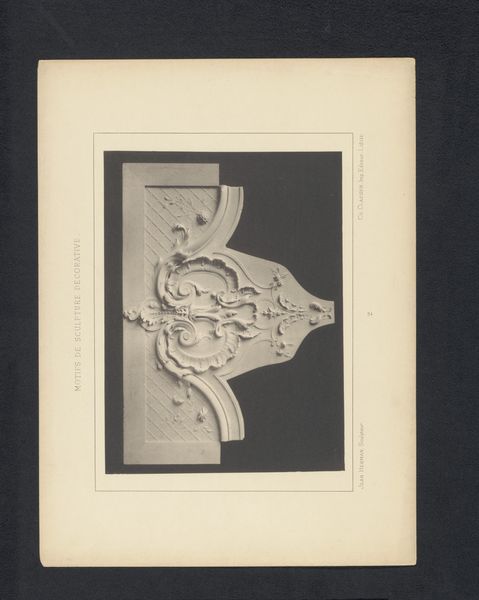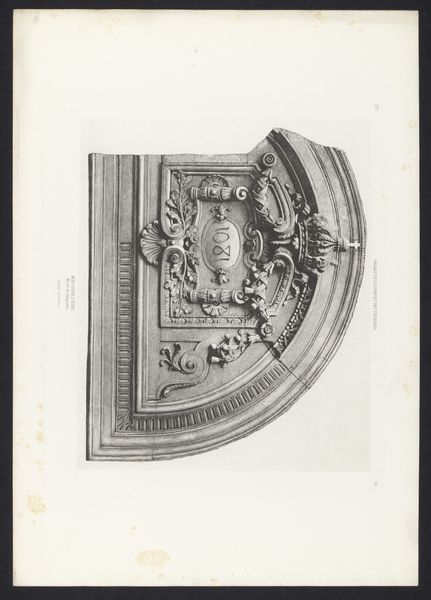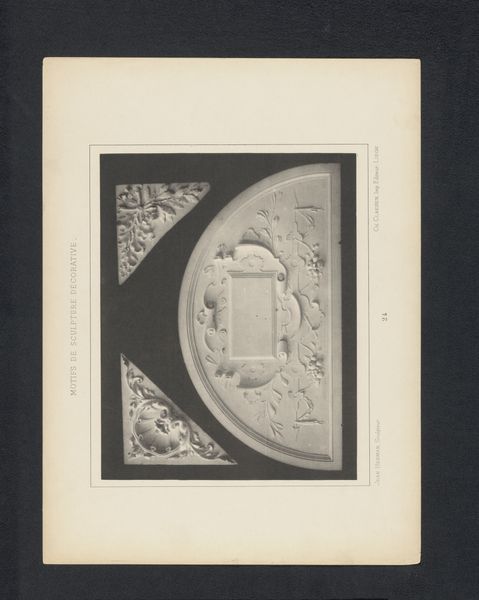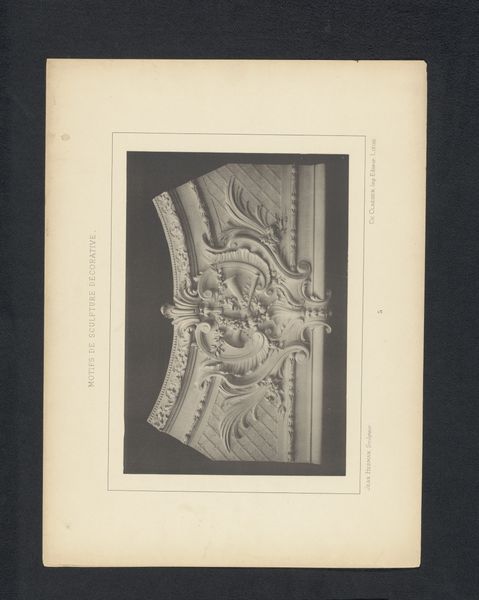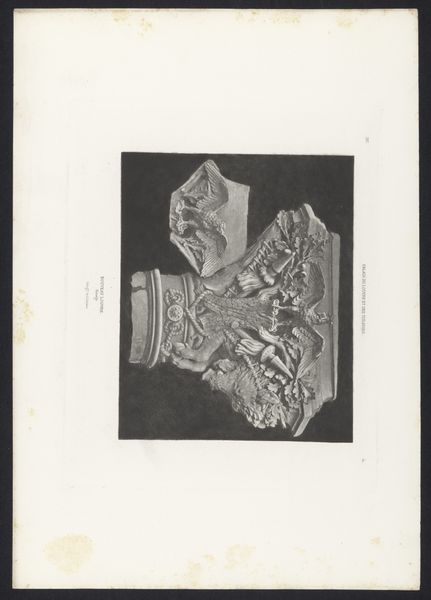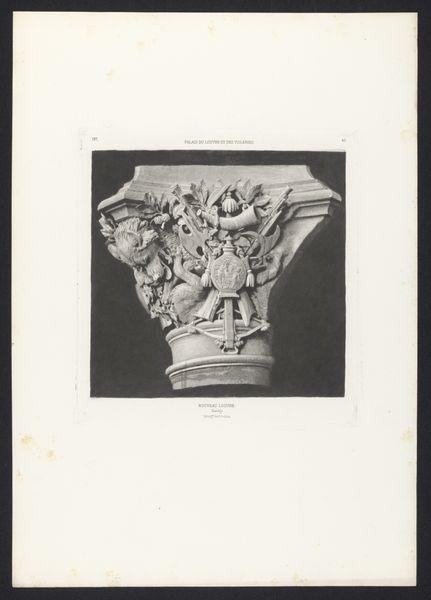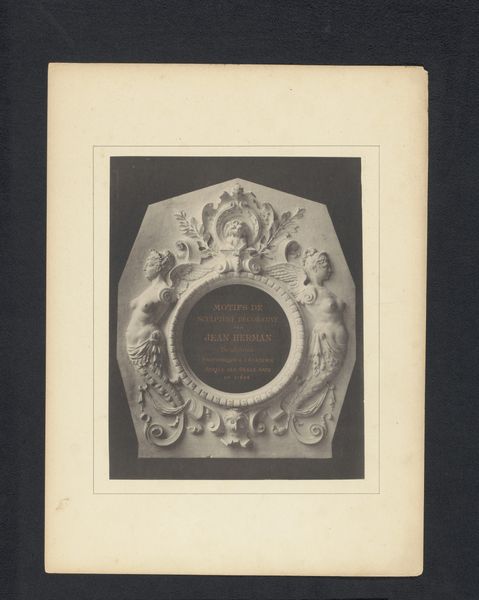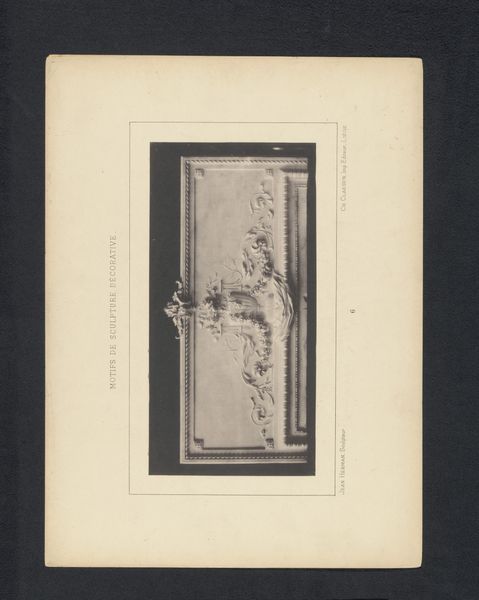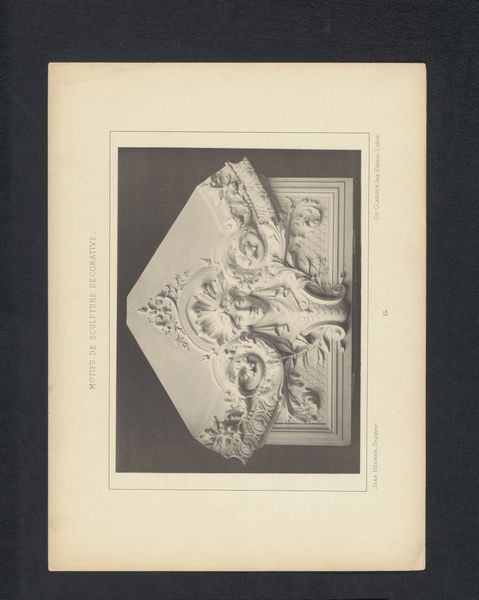
Ornament (vermoedelijk) van het Palais du Louvre te Parijs before 1870
0:00
0:00
ornament, print, etching, photography, site-specific, engraving
#
ornament
# print
#
etching
#
photography
#
ancient-mediterranean
#
site-specific
#
engraving
Dimensions: height 150 mm, width 190 mm
Copyright: Rijks Museum: Open Domain
Editor: We’re looking at an etching of what’s thought to be an ornament from the Palais du Louvre in Paris, created before 1870 by Edouard Baldus. The composition is quite striking, with the fragment of ornamentation dominating the space. I'm immediately drawn to the stark contrast between the detailed carvings and the plain background. What catches your eye about this piece? Curator: Immediately, the interplay between positive and negative space commands attention. Note how the circular void at the ornament's center is not merely absence, but a focal point structured by the density of the surrounding carved details. The texture, captured via Baldus's skillful technique, becomes almost tactile. We are confronted with a sophisticated use of line, form, and shadow. Consider the semiotic function of the cherubic figures interspersed among the foliage. Editor: The cherubs do add a certain levity to the piece. Are they commonly seen in architectural ornaments from this period? Curator: Indeed. Their presence, as well as the foliate designs, are crucial formal components of classical architectural semiotics. The cherubs function as visual metaphors that signal purity, innocence, or even divine approval within the ornamental structure. Furthermore, observe the strategic placement of each design element to achieve a structural and visual balance, each curl, figure, and line contributing to the integrity of the design. The work displays a command of aesthetic arrangement and formal organization. Editor: It’s fascinating how a seemingly simple fragment reveals such structural depth. Curator: Precisely. By examining the composition closely, the relationship of its various parts and Baldus' skill with light and shadow, we come to understand it as an intentional creation intended for more than superficial admiration. What appeared fragmented is actually unified and intricately rendered.
Comments
No comments
Be the first to comment and join the conversation on the ultimate creative platform.

